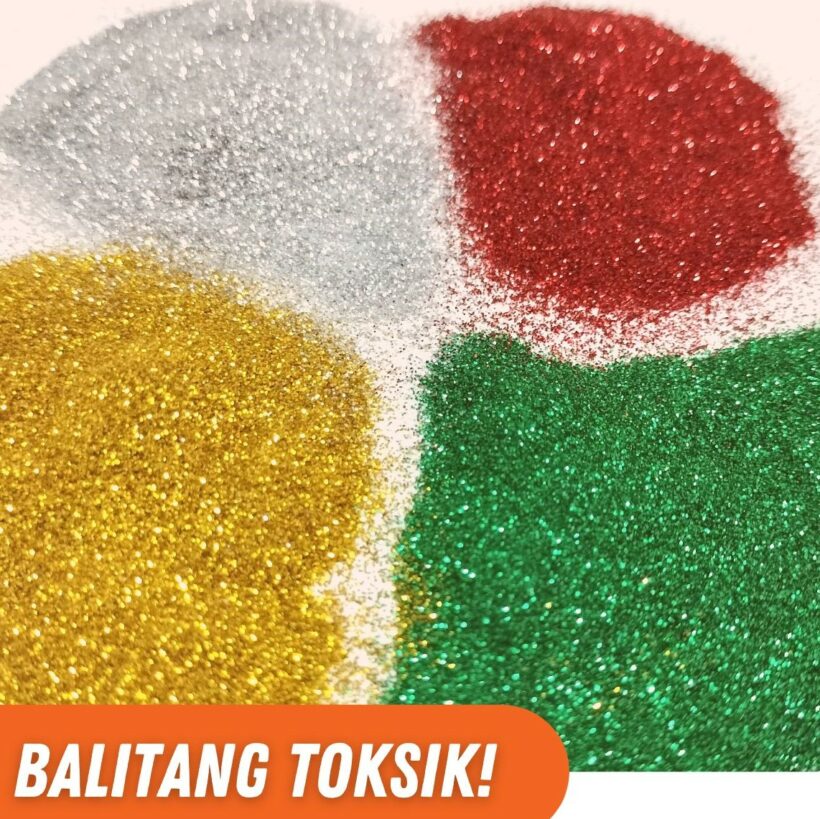Now that the spirit of the yuletide season is everywhere, people have started decorating their houses, schools, offices, stores, and malls with different colorful decorations and lights. In line with this, environmental watchdog BAN Toxics appealed to the public to take precautions in using glitters as they are known microplastics that can harm marine life and the environment.
Glitters refer to small and shiny particles mainly used for arts and crafts for decorations, in toys and children’s products and sometimes used in hair, face, nails, and body to make it glow, shiny, and have a reflecting effect.
Citing information from Today Glitter, the most common materials that comprise glitters include polylactic acid (PLA) and polyethylene terephthalate (PET) plastics. Due to its small size, glitter is considered a microplastic, which may also include toxic components such as aluminum, titanium dioxide, and iron dioxide.
Microplastic particles that compose glitter end up in our landfill or are washed down the drains. These particles end up in rivers, finding their way into the oceans and becoming part of the growing microplastics problem.
“Microplastics such as glitter and other plastic materials that break down into smaller particles may lead to health and environmental concerns for both human and marine wildlife. Glitter can also contribute to the spread of toxic chemicals through a number of ways once disposed of improperly,” said Jam Lorenzo, Policy and Research Specialist of BAN Toxics.
To address the global concern about plastic pollution, the United Nations Environment Programme
will spearhead the first session of the Intergovernmental Negotiating Committee (INC1) from 28
November to 2 December, to develop an international legally binding instrument on plastic pollution, including in the marine environment.
According to the International Pollutants Elimination Network (IPEN) – an international network
of over 600 public interest non-governmental organizations (NGOs) in over 120 countries, the Plastics Treaty is a vital step to making significant progress on the protection of human health, the health of other living beings, and the environment from the toxic impacts of plastics throughout their full lifecycle.
Plastics are made from fossil fuels (oil and gas) with mixtures of chemicals. Plastics consist of polymers combined with other chemicals added for specific properties. More than 10,000 different chemicals are used in plastics, among which about one-quarter are recognized as chemicals of concern (while hundreds have incomplete or no hazard data).
“We call on the Philippine government to prioritize plastic pollution-related policies and laws including the ban on single-use plastic and eliminating the use of microplastics such as glitter due to its potential impact on health, the environment and our marine life.” BAN Toxics added.
References:
https://www.todayglitter.com/blogs/today-glitter/is-glitter-toxic-learn-why-we-need-an-alternative
https://ipen.org/sites/default/files/documents/2022_plastic_inc1_quick_views_web.pdf
https://www.unep.org/events/conference/inter-governmental-negotiating-committee-meeting-inc-1










